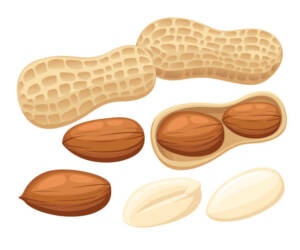Project Report For HPS Groundnut
Introduction
Project report for HPS Groundnut is as follows.
These tiny, oval-shaped nuts, sometimes known as groundnuts or monkey nuts, may have been one of the earliest grain legumes that humans tamed. Due to their high oil content, these crunchy, delicious, and aromatic seeds or legumes used to be a common ingredient in Indian cuisine. These light pink beans were a great mid-afternoon snack, even though nut oil that had been ground up was frequently used to season a variety of dishes and even for deep frying.
India is the world’s second-largest producer of groundnuts, behind China (41%), at 11%. 15% of the world’s oilseeds are produced in India. Six states—Gujarat (approximately 40%), Andhra Pradesh (18%), Tamil Nadu (11%), Karnataka (9%), Rajasthan (8%), and Maharashtra (6%), produce 90% of the groundnuts that are grown in India. Gujarat, which produces more than 30% of the nation’s groundnuts, and more specifically the Saurashtra region, is the largest and best-quality producer in the country.

Product & Application of HPS Groundnut
The two main types of peanuts produced in India are Java (Spanish) and Bold (Virginia). While the summer crop is irrigated, the winter harvest of peanuts is rain-fed. The Java variety makes up 85% of the summer crop while the Bold type makes up 70% of the winter crop. Peanuts of the Bold kind frequently have red skin and an elongated form. The peanuts of the Java species have pink skin and a spherical, rounded shape.
HPSGs are categorized according to sizes that correspond to counts per ounce. For example, a 55-60 count denotes between 55 and 60 kernels per ounce. Kernels are categorized into four main categories based on this count: tiny (60–80 counts), medium (40–60 counts), large (30–40 counts), and huge (20–30 counts). Typically, counts range from 10 for small kernels to 5 for medium and large grains to 2 for very large seeds.
Similar to that, nuts in shell should fall within a range of 2. The usual format for identifying HPSGs is to use the country of origin, varietal group, and count; for example, Indian Bold 55/60, US Virginias 28/30, South Africa Natals 60/70, etc.
Get Completely Custom Bankable Project Report
India is the second-largest producer, with annual outputs reaching 5.6 million tons and surface areas under the crop topping 8 million hectares. The next largest producers, with annual outputs ranging between 1 and 1.5 million tons, are the United States, Nigeria, Argentina, and Indonesia.
Market Potential Of HPS Groundnut
The market for groundnut was estimated to be worth USD 2.40 billion in 2021 and is anticipated to grow to USD 3.28 billion by 2029, at a CAGR of 4.00% over the forecast period of 2022–2029, according to Market Research.
Expenses

Product Cost Breakup

Reveneue Vs Expenses

Market Trend

Groundnuts, a staple food for many developing countries, deserve a closer look as an export commodity. Less than 6% of the global groundnut crop is traded globally, with annual export sales typically hovering around US$1 billion. Therefore, there is room for groundnut exports to developing. A sustainable strategy to deal with the increased demands for food and foreign currency is to invest in groundnuts.
Today’s exporters confront two significant challenges: assuring food safety by preventing and controlling mycotoxin contamination of products and tailoring groundnut supplies to demand types most suited to specific end-uses.
China just surpassed India as the greatest producer of groundnuts in the world thanks to market reforms, increasing use of high-yielding seed varieties, and agricultural inputs (fertilisers, herbicides, insecticides, mechanisation, and irrigation). 6 million tonnes of groundnuts are produced annually in China on more than 3.6 million hectares of land.
